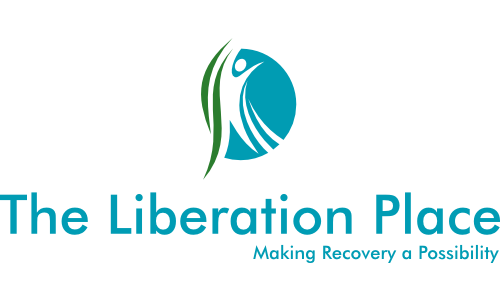One Mindful Activities
With a little bit of luck and a modicum of hard work, hopefully we are now all aware that Dialectical Behaviour Therapy is built on a foundation of Mindfulness. Without the ability to mindfully spot when our system leaves its emotional base line, and enters into a place of emotional distress, we continue reacting to our emotional experiences in old familiar ways. Habitually playing out our past in the present moment and then questioning why things keep going the same way as they always do. As I have said before, many people believe mindfulness is all about emptying our mind of thoughts, and while this is definitely one way we can practice mindfulness, it's not the way we want to practice it when building mindful awareness for what’s happening within our personality system.
Our thoughts and feelings influence the way we behave, so learning how to identify these things is key to any type of behaviour change. This is the reason we Observe and Describe what’s happening in our system, non judgementally and effectively. Many people do this by sitting silently in a meditative state. For me this isn’t something I find easy to do, so practicing my mindfulness while participating in “mindless” activities helps me accomplish this goal without impacting my busy lifestyle in a negative way. If you are anything like me, this is why it’s important to develop the skill of participating in activities, One Mindfully.
"I personally practice One Mindfulness when I drive home from dropping my kids off at school in the morning."
~Steven Morris RP.
Learning to use the skill called acting One Mindfully is like opening our eyes for the first time to what's happening within our personality system. In fact, it's been said that, developing our ability to mindfully observe what's happening within our system is like walking across a room full of furniture with our eyes wide open instead of keeping them completely shut. Yes, we can manage to navigate our way across the room in one way or another, using either option. However, it's clear to see that it would be way more effective to participate in this activity with our eyes wide open.
As with everything in DBT, it is essential to practice these skills every single day, as often as you can. I personally practice One Mindfulness when I drive home from dropping my kids off at school in the morning. I start by turning off the radio and all other distractions, focussing my attention on driving, almost as though I was taking my driving test. Then I notice how my mind starts to wander as different parts of my personality try to bring my attention to the tasks of the day, what that guy was doing at the side of the road, or how I wish I would’ve said the thing I wanted to say in that heated conversation I had yesterday. When this happens, I follow the steps of acting One Mindfully, by Observing, and Describing these parts, then bringing my attention back to participating in the act of driving.
There are many different ways we can practice One Mindfulness as we go about our daily tasks. The following is a list of activities that are considered excellent examples of ways for us to practice One Mindfulness effectively.
Eating One Mindfully
Picture, if you can, that I choose to practice my One Mindfulness today while I am eating my lunch. As I eat the food that I’ve prepared, I begin by paying attention to the tastes and smells that I am experiencing. I notice the texture of the food as I chew and eventually swallow it, and at the same time, I notice how my mind begins to wander away from the moment. My thoughts take me to a volatile situation that happened earlier that day, when a person cut me off in traffic, and then gave me the finger when I sounded my horn. I begin to ruminate on the situation, there is a part of my personality that wants to blend with my system, he wants to let me know that he’s angry and wants to get revenge on the other driver. Instead of fully engaging, I notice that these thoughts are present (Observe), and I label it non judgementally (Describe) to validate the parts experience by saying to myself, “I’m noticing there’s a part of me that’s really angry about that situation earlier, I hear you buddy, it was a crappy situation, thank you for reminding me of that and sharing your feelings. It’s completely understandable that you feel that way, and you’re allowed to be angry about it too.” I then bring my attention back to the food that I am eating and continue being present in the current moment (Participate).
Watching Movies One Mindfully
Sometimes I practice One Mindfulness while I am watching a movie with my family. I put down my phone and get into the moment of watching the movie we've chosen this week. I notice the story being told, spend the time getting to know the characters, and sit in the moment of experiencing the artistic work I'm witnessing. At the same time, I notice how my mind tries to take me away from this moment. There is a part of me that recognises a particular actor, or voice if the movie is animated. There is an urge for me to pick up my phone and search the cast of the movie so I can figure out where I know them from. Instead, I practice One Mindfulness, by Observing and Describing this part of my personality by saying in my thoughts, "I'm noticing there's a part of me that want's to find out who that person is. Thank you for sharing buddy, I hear you, we can look that up later, right now I want to watch the movie." I then bring my attention back to the movie and participate in the experience of watching it with my family.
Exercising One Mindfully
Exercise in an essential part of any healthy lifestyle. Not only does it help with physical fitness and energy, it also plays a significant role in our mental health and wellness too. Regular exercise gets the heart pumping, and in turn, our blood flowing, which has been shown to create the bodies own natural anti depressants. Exercise is also a fantastic opportunity to practice One Mindfulness. It would be an unrealistic expectation to complete your whole exercise routing from a Wise Mind perspective, so the way I choose to practice during my daily routine is I pick one particular exercise that I am doing, and I focus my attention solely on that exercise. Keeping my mind set on my form, my breathing, and my counting. While at the same time, dialectically speaking, I notice my thoughts trying to distract me from the activity.
When I observe this part of me enter my thinking, I label it, nonjudgmentally, thank it for sharing using the same format as we previously described, and then bring my attention back to the exercise I’m doing. For example, if I am using my rowing machine, I focus on my form, my breath, and my counts, then observe a thought like, “what should I make for dinner later?” Instead of following this thought off down a rabbit hole of thoughts and feelings, I simply describe it by saying to myself, “There’s a part of me that really wants to plan my meals for later, I hear you, and thank you for sharing, I am exercising right now, and I will plan that later.” Then I bring my attention back to my rowing and focus back on my form, breath, and count.
Trains in a Station
Sometimes, it can seem like our mind is racing at 1 million miles an hour. This is the very nature of the constant stream of conversation from within our personality system. I once heard it said that the average human being has between 60 and 100 thousand thoughts in a single day. When you actually stop to think about it, it’s understandable that this constant flow of thinking is extremely challenging to manage to say the least. Metaphorically speaking, learning how to observe the parts that show up in our thinking is like watching trains pass through a station. Over the passage of time, many trains pass through the station we call our mind. Some of them we notice, and some of them we don’t. Eventually, one of the trains will stop at our station, providing us with the possibility of travel. Mindful Awareness gives us the ability to choose whether or not we want to get on this train and take it to its destination. This is how we get to choose if we want to follow a particular “train of thought.”
Urge Surfing
A quick word on something that’s known as Urge Surfing. This is a term that was coined by the American Canadian Psychologist, Alan Marlatt. It’s designed to support individuals with addictive, compulsive, and obsessive behaviour patterns, or any other destructive impulses associated with unwanted coping mechanisms. As a result of the research he completed, he asserts that Cravings rarely last longer than about 30 minutes if there is no opportunity for the person to actually use the behaviour pattern they’re being internally pushed to use. If there is no opportunity to participate in the behaviour, then the urge passes and, as a result, there is no longer an internal struggle. It's this uncomfortable internal battle that feeds the cravings that we struggle with.
Trying to fight cravings is like trying to block a waterfall. If you stand in the middle of it, you’ll end up getting absolutely soaked. Using the approach of mindfulness, and in particular when we practice the skills of Observe and Describe to activate Cognitive Defusion, we can step aside and watch the water just go straight past us. In other words, urges are just thoughts that try to take you away from the present moment to participate in a behaviour that will numb, or escape from, our uncomfortable emotional experience. This is true for almost everybody, but very few of us ever give ourselves the chance to prove it because we don’t have the mindful awareness to notice what’s happening in real time. Building Mindful awareness is the answer to this problem, and practice, practice, and more practice is the only way to achieve it.
In the PDF at the bottom of this page there is an exercise designed to help you build your ability to practice One Mindfulness. Take some time to complete the exercise and use it to help you develop your own unique One Mindful Practice.





